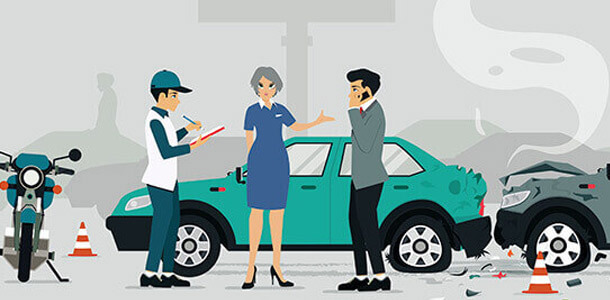Buying Collision Coverage
By the name itself, collision coverage is the type of insurance that covers the insured against damage resulting from an actual collision. This is not the coverage that pays for vandalism or for loss of a vehicle or any of its parts as that would be the comprehensive coverage. It is also not the policy that covers damage paid from the other driver’s policy if they were at fault in the accident you figured in.
In other words, collision insurance offers coverage for cars that figure in collisions. Collision insurance is always subject to a policy deductible. The deductible is the portion paid by the insured. A higher deductible results to lower insurance costs and vice versa. Vehicle owners typically set a deductible starting from $500, depending on the make and model of their vehicle. If the cost of repairs is lower than $500, then the owner would not have to file for a claim, which means that their claim record would not be impacted. Claims history is a factor considered when the insurer sets the premium rates.
Collision coverage is designed to cover the costs of vehicle repairs or parts replacement. It also pays for the cash value of the vehicle if it is beyond repair or if it is a total loss. Collision insurance is optional but if you purchase your car through a loan, your lender will require you to purchase collision insurance up to the time you finish paying off your loan.
Keep in mind that collision coverage only pays for the damage to your own vehicle and not the third party’s vehicle if you figured in a collision with another vehicle. You can always file a claim against the other person if you think they are to blame in the accident.
There are compelling reasons for purchasing collision insurance. Even if you are the world’s most diligent and careful driver, accidents do happen and you may be responsible for them. It can also happen that you will not be able to collect from the other driver if they were at fault in the accident you get involved in. This is when collision insurance will kick in. Your collision policy will cover for the cost of the damage to your vehicle regardless of who was at fault.
You may figure in an accident with another vehicle and fully believe that it is the other driver’s fault but they may disagree with you. In order to avoid a lengthy legal process of suing the other driver in court, your collision coverage can pay for the repairs in the mean time. You can still pursue your claim against the involved party in a procedure called subrogation. Your insurer is ethically bound to try to recover as much money as they can from the other party to give you back a portion of, or your entire deductible.
There are also instances when you figure in an accident with another vehicle where the other driver who was at fault has no liability coverage. In this situation, suing would be pointless as the uninsured motorist coverage does not pay for your car’s damage, but collision does. Your collision coverage will also pay for the costs you incur if you hit a telephone pole or a tree.
When shopping for collision coverage you should keep in mind that the value of coverage you will need as well as its cost will be based on the value of your car. As in any type of motor insurance product, your premium for collision coverage will also be affected by factors such as the age of the driver, his driving history, his claims history, the model and make of the vehicle and other factors. Expect your premiums to be a little high if your vehicle is expensive, easily damaged, accident prone, hard to repair, or frequently stolen. Cars that score high on durability and safety will typically have a lower insurance premium. Your total cost will depend on the nature of the damage as well as its extent, and whether you replace your parts with refurbished or brand new parts.
One special restriction you should remember when it comes to collision coverage is that your insurer will only pay up to the cash value of your car. This is computed by taking the market value prior to the accident and subtracting the salvage value of the damaged vehicle from this market value.

